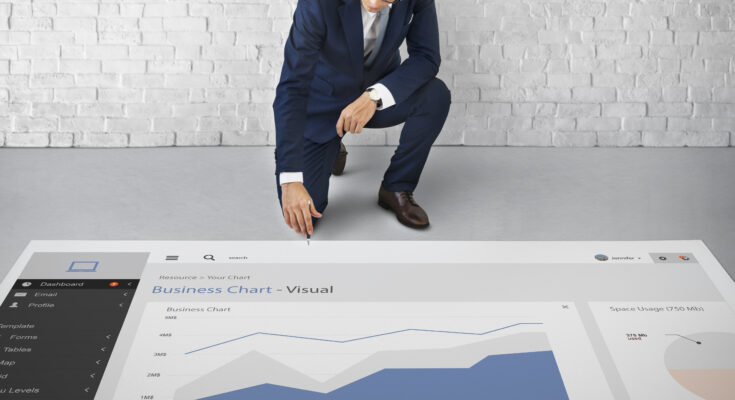Table of Contents
- Introduction of TradingView
- Understanding Technical Analysis
- Overview of TradingView
- Charting Tools and Indicators
- Drawing Tools and Analysis Techniques
- Backtesting and Strategy optimisation
- Social Networking and Idea Sharing
- Integration with Trading Platforms
- Benefits of Using TradingView for Technical Analysis
- Limitations and Considerations
- Conclusion
- References
Introduction
Technical analysis is a critical component of trading, providing insights into price movements and trends based on historical market data. TradingView is a popular platform among traders and investors for conducting technical analysis due to its comprehensive suite of tools and features. In this article, we explore how traders can leverage TradingView for technical analysis to make informed trading decisions and enhance their trading strategies.
Understanding Technical Analysis
Technical analysis is a method of analysing financial markets by studying historical price data and trading volumes to forecast future price movements. Traders use various tools and techniques, such as chart patterns, indicators, and oscillators, to identify trends, support and resistance levels, and potential entry and exit points for trades.
Overview of TradingView
TradingView is a web-based platform that provides charting tools, technical analysis indicators, and social networking features for traders and investors. With its intuitive interface and customisable charts, TradingView allows users to visualise market data, analyse trends, and share trading ideas with a global community of traders.
Charting Tools and Indicators
TradingView offers a wide range of charting tools and technical indicators to help traders analyse market trends and patterns. Users can customise their charts with indicators such as moving averages, Bollinger bands, the Relative Strength Index (RSI), and MACD (moving average convergence divergence), among others, to identify potential trading opportunities.
Drawing Tools and Analysis Techniques
In addition to charting tools and indicators, TradingView provides drawing tools and analysis techniques for traders to perform technical analysis. Users can draw trendlines, channels, Fibonacci retracement levels, and other geometric shapes on their charts to identify key levels of support and resistance and visualise price patterns.
Backtesting and Strategy optimisation
TradingView allows users to backtest trading strategies and optimise them for better performance. Traders can develop automated trading strategies using TradingView’s Pine Script programming language and test them against historical market data to evaluate their effectiveness and profitability.
Social Networking and Idea Sharing
One of the unique features of TradingView is its social networking and idea-sharing capabilities. Traders can publish trading ideas, analysis, and insights on the platform and interact with other users through comments, likes, and follows. This collaborative environment fosters idea sharing, knowledge exchange, and community engagement among traders.
Integration with Trading Platforms
TradingView integrates with various trading platforms and brokers, allowing users to execute trades directly from the platform. This seamless integration streamlines the trading process and enables traders to implement their trading strategies more efficiently.
Benefits of Using TradingView for Technical Analysis
- Comprehensive charting tools and indicators for in-depth analysis
- Customisable charts and drawing tools for personalised analysis
- Backtesting and strategy optimisation capabilities for refining trading strategies
- Social networking features for idea sharing and community engagement
- Integration with trading platforms for seamless trade execution
Limitations and Considerations
- Some advanced features may require a paid subscription
- There is limited historical data for backtesting in the free version
- Reliance on internet connectivity for accessing the platform
Conclusion
In conclusion, TradingView is a powerful platform for traders and investors to conduct technical analysis and make informed trading decisions. With its comprehensive suite of tools, customisable charts, social networking features, and integration with trading platforms, TradingView empowers traders to analyse market trends, develop trading strategies, and engage with a global community of traders. By leveraging TradingView for technical analysis, traders can enhance their trading strategies and improve their overall trading performance.
References
- Murphy, J. J. (1999). Technical Analysis of the Financial Markets: A Comprehensive Guide to Trading Methods and Applications. Penguin.
- Pring, M. J. (2014). Technical Analysis Explained: The Successful Investor’s Guide to Spotting Investment Trends and Turning Points. McGraw-Hill Education.
- Bulkowski, T. N. (2005). Encyclopaedia of Chart Patterns. John Wiley & Sons.
- Leinweber, D. J. (2011). Nerds on Wall Street: Math, Machines, and Wired Markets. John Wiley & Sons.
- Kirkpatrick, C. D., & Dahlquist, J. R. (2010). Technical Analysis: The Complete Resource for Financial Market Technicians. FT Press.
- Kaufman, P. J. (2013). Trading Systems and Methods. John Wiley & Sons.
- Schwager, J. D. (1992). Market Wizards: Interviews with Top Traders. HarperCollins.
- Elder, A. (2002). Come into My Trading Room: A Complete Guide to Trading. John Wiley & Sons.
- Nison, S. (2001). Japanese Candlestick Charting Techniques. Penguin.
- Appel, G. (2005). Technical Analysis: Power Tools for Active Investors. FT Press.




Thanks for posting. I really enjoyed reading it, especially because it addressed my problem. It helped me a lot and I hope it will help others too.
Thank you for your articles. They are very helpful to me. Can you help me with something?
My brother recommended I might like this website. He was entirely right. This post actually made my day. You cann’t imagine simply how much time I had spent for this information! Thanks!